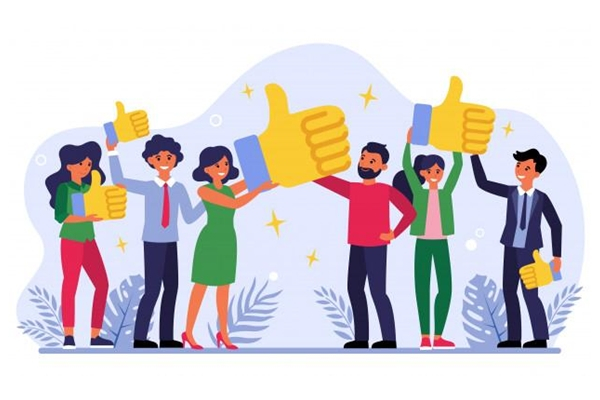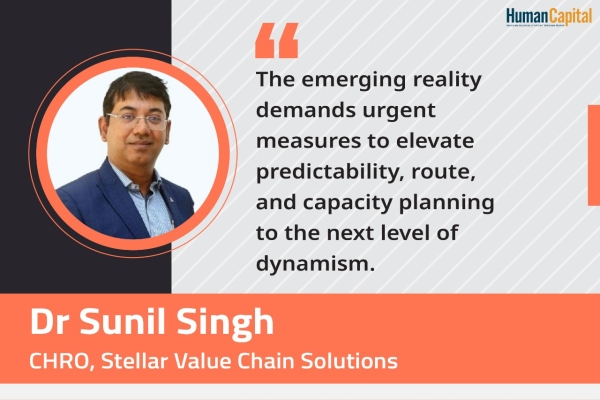Instead of looking at the enhancement of employee experience as a liability, organisations will be best served if they see it as an opportunity to work with highly motivated individuals who can make a difference.
If you are wondering why Employee Experience Enhancement is suddenly a hot topic in 2020, here’s something to chew on - talent has gotten scarcer than ever. Rising global unemployment trends might indicate a war for jobs, but as far as employers are concerned, it is going to be a battle to attract and retain the right talent which can impact the bottom line. Research has vouched that top talent will be eight times more productive, whereas the “failure to attract and retain top talent” is on the top of the minds of CEOs today.
Even as the importance of Employee Experience Enhancement becomes clear, it is not easy to get it right simply because organizations are slow or reluctant to spend time, money, and effort in understanding what today’s talent wants. Gallup, a Washingtonbased analytics and advisory company, has reported that engaged employees are more likely to improve customer relationships, with a resulting 20% increase in sales. Trillions of dollars are spent worldwide in understanding customer journeys vis-à-vis sophisticated tools and technology, but employee journeys, if at all, receive little attention. Diana Dosik, Partner, Boston Consulting Group, has disclosed in her Ted Talk that business leaders spend less than 5% of their time in understanding what truly drives talent. This is despite the fact that happy employees lead to happier customers.
Since the understanding of what talent really wants is limited, most organisations working towards enhancing employee experience mistake it for:
◆ A perk-led initiative
◆ An exercise concerning only current employees
◆ Limited to employee engagement
◆ A time-bound activity to be facilitated by a tool, an app or a system
◆The job of the HR department
◆Only beneficial to employees and not employers
What talent truly wants?
People’s experience at workplaces today is a crucial factor that contributes to their overall happiness. This contrasts with the baby boomers who primarily expected their work to meet ends and pay bills, and hardly viewed it as rewarding. Millennials and Gen Z expect their workplaces to match their consumer experience i.e. customised, userfriendly, seamless and meaningful. Similar to how customers look beyond the product/ service to a brand’s reputation and reviews, social media presence and supply chain, employees also pay attention to wider needs. In contrast to the earlier days, employee-employer relations today is a two-way street where both parties want the best for themselves, and at the least, expect the other to meet them midway. Today’s Talent wants employers to recognise, facilitate, and even celebrate moments that truly matter in their journey, starting at recruitment and ending with separation.
What’s working for organisations?
It is not surprising that the top trends around improving the experience of employees today are digitalisation and technology-led. Organisations are relying on data and analytics-driven decisions to not only attract the best-fit talent, but also to nurture longterm relationships with the talent which was lost to competition. Employer branding initiatives by many forward-looking companies target prospects with strong brand messages at platforms candidates best engage with. This is to generate awareness, interest, and eventually consideration. Falling under the umbrella of Recruitment Marketing and Candidate Relationship Management, these initiatives, rooted in technologies like Artificial Intelligence and Machine Learning, are like the proverbial killing of two birds with one stone. They are leading to better workforce planning, skills gap analysis, assessment and retention and are saving costs big time.
Digital Onboarding - Making first few experiences count
For today’s tech-driven generation that highly vies for convenience, the first few interactions with the brand impact the overall brand impression. Interviews, form filling and onboarding are processes during which a candidate’s mind registers many impressions and derives multiple conclusions - consciously and subconsciously.
Onboarding the new employees digitally so that all the departments are on the same page and all actions associated with hiring are defined, allocated and completed on schedule is working miraculously to affect employee retention. A 2019 report titled Trends and Applications in Employee Onboarding by SilkRoad Technology revealed that organisations with a clearly outlined onboarding process enjoyed 82% higher retention of fresh recruits as well as a 70% uptick in productivity. This makes sense when one considers that filling fifty forms before they get to their workstations is not exactly the kind of beginning that today’s talent anticipates at a new job. Additionally, by relieving the HR and hiring managers from the manual and laborious tasks associated with onboarding, one can allow them to create more customised and personal welcome experiences for employees.
Aligning an organisation’s learning and development agenda with its employees’ needs is bound to fan the feeling that employers ‘get’ their aspirations. This is especially true in today’s time when skills are becoming obsolete in a matter of a few years. Because they realise that meaningful work matters to talent, successful organisations today communicate and clearly substantiate how an individual’s job directly affects the bottom line.
Instead of looking at the enhancement of employee experience as a liability, organisations will be best served when it is seen as an opportunity to work with highly motivated individuals who can make a difference. It is also crucial to understand that while a great employee experience today might be technology-driven, it really is about making our workplaces more humane. Since every individual is designed to work in their own best interest, it makes sense for organisations to uncover these interests, water, feed and align them to organisational objectives so that they contribute to the growth of individuals as well as employers.
Do you look forward to permanently working from home after the pandemic subsides?
Trending
-
SBI General Insurance Launches Digital Health Campaign
-
CredR Rolls Out 'Life Happens' Leave For Its Employees
-
Meesho Announces 30-Week Gender-Neutral Parental Leave Policy
-
Microsoft Unveils Tech Resilience Curriculum To Foster An Inclusive Future
-
60% Indian Professionals Looking For Job Change Due To COVID: Survey
-
SpringPeople And Siemens Collaborate For Digital Transformation Push
-
86% Professionals Believe Hybrid Work Is Essential For Work Life Balance: Report
-
Almost 1 In Every 3 People's Personal Life Affected Due To Work Stress
-
Meesho Rolls Out Reset And Recharge Policy For Employees
-
80% Of Talent Leaders & Academics Say Pandemic Changed Skill Needs For Youth: Report
-
Hero Electric Rolls Out 'Hero Care' Program For Employees
-
Human Capital In Collaboration With ASSOCHAM Hosts Virtual Conference
-
IKEA India, Tata STRIVE Collaborate To Create Employability And Entrepreneurship Opportunities
-
SAP India, Microsoft Launch Tech Skilling Program for Young Women
-
DXC Technology, NASSCOM Collaborate For Employability Skills Program
-
Lenskart To Hire Over 2000 Employees Across India By 2022
-
Mindtree Launches Learn-and-Earn Program
-
Tata AIA Extends 'Raksha Ka Teeka' To Its Employees
-
Swadesh Behera Is The New CPO Of Titan
-
NetConnect Global Plans To Recruit 5000 Tech Professionals In India
-
Hubhopper Plans To Hire 60% Of Indian Podcasters By 2022
-
Corporate India Needs More Women In Leadership Roles: Report
-
Aon to Invest $30 Million and Create 10,000 Apprenticeships by 2030
-
Tech Mahindra Launches ‘Gift a Career’ Initiative for Upskilling of Youth
-
40% Women Prefer Flexible Working Options in Post-COVID World: Survey
-
3 out of 4 companies believe they can effectively hire employees virtually: Report
-
Vodafone , CGI and NASSCOM Foundation launch digital skills platform
-
Odisha: Bank, postal employees to deliver cash for elderly, differently-abled persons
-
Skill India launches AI-based digital platform for "Skilled Workforce"
-
Hiring activity declines 6.73% in first quarter: Survey
-
70% startups impacted by COVID-19 pandemic
-
Bajaj Allianz Life ropes in Santanu Banerjee as CHRO
-
Over 70 Percent MSMEs look at cutting jobs to sustain businesses
-
93 Per Cent employees stressed about returning to office post-lockdown
-
Johnson & Johnson India announces family benefits for same gender partners
-
Indian firms turning friendly towards working mothers
-
Welspun India names Rajendra Mehta as new CHRO
-
Wipro partners with NASSCOM to launch Future Skills platform



Human Capital is niche media organisation for HR and Corporate. Our aim is to create an outstanding user experience for all our clients, readers, employers and employees through inspiring, industry-leading content pieces in the form of case studies, analysis, expert reports, authored articles and blogs. We cover topics such as talent acquisition, learning and development, diversity and inclusion, leadership, compensation, recruitment and many more.
Subscribe Now



.PNG)









































Comment